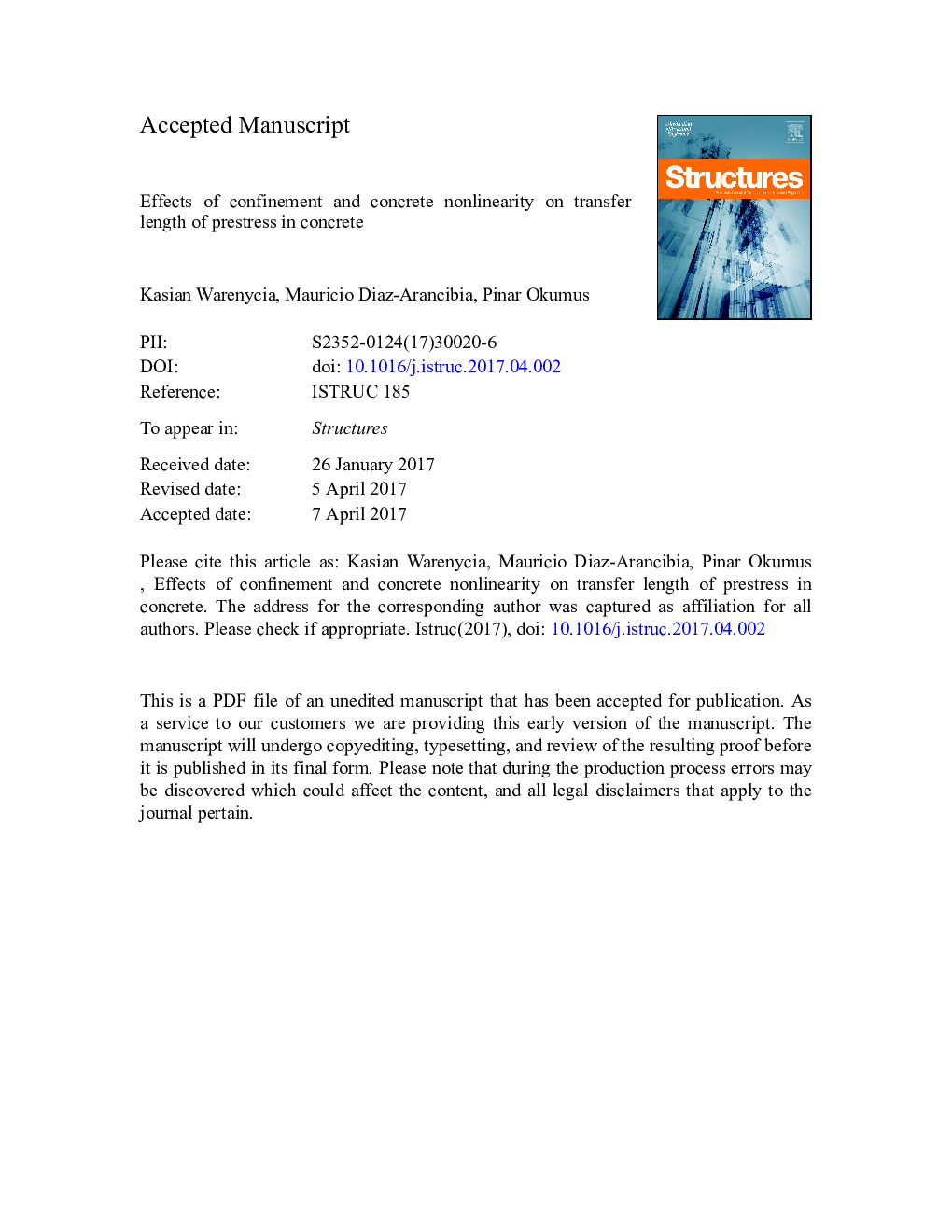| Article ID | Journal | Published Year | Pages | File Type |
|---|---|---|---|---|
| 4927893 | Structures | 2017 | 44 Pages |
Abstract
Accurate prediction of strand transfer length is important for prestressed concrete members when calculating anchorage zone stresses and shear capacity. Currently, most design specifications oversimplify strand transfer length due to the large number of factors affecting it. This research investigated two of these factors to better understand strand-concrete bond and to improve transfer length predictions: 1) concrete nonlinearity due to concrete plastic strains surrounding prestressing strands, and 2) strand confinement due to groups of strands, concrete, or reinforcement. Nonlinear finite element analyses (FEA), which were calibrated using test data, were used to study material nonlinearity and confinement. Transfer length was investigated using models of both a simple prismatic beam with 25 strands commonly used in laboratory research and a bulb-tee girder with 40 strands commonly used in bridge construction. The results show that strand-concrete bond and transfer length are strongly influenced by concrete nonlinearity. Confinement affects transfer length because of its influence on plastic strains in concrete.
Related Topics
Physical Sciences and Engineering
Engineering
Civil and Structural Engineering
Authors
Kasian Warenycia, Mauricio Diaz-Arancibia, Pinar Okumus,
